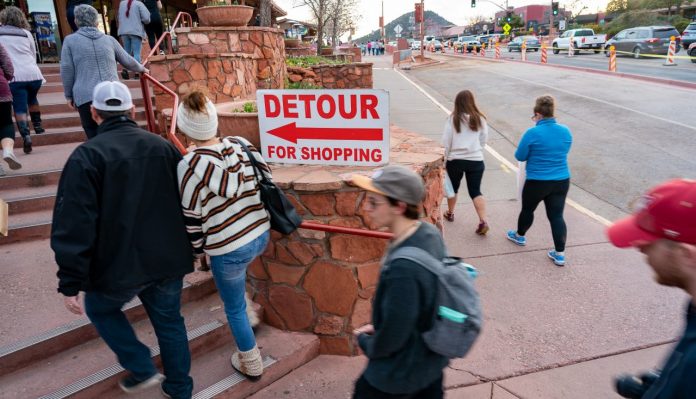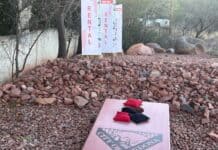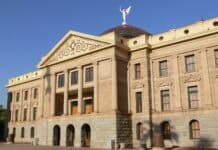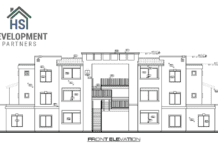
Sedona’s main economic generator is tourism. Few people dispute that, but what is up for discussion is how to literally spread the wealth while diversifying the local economy.
The Sedona City Council got a better understanding into what that diversity may look like during a three-hour discussion and presentation on Wednesday, Feb. 12.
Last March, Economic Development Director Molly Spangler and her department collaborated with APS to complete a five-year Economic Diversification Plan. APS funded 75% of the plan’s cost in the amount of $30,000. The city and APS entered into an agreement with ESI Corporation to conduct research, interviews, draft an economic diversification strategy and lead three planning sessions.
Along with Spangler, ESI’s Judie Scalise led the discussion with council. Also on hand were some of the members of a community advisory group that assisted in developing the plan.
“The Sedona Economic Diversification Strategy Plan presents a clear plan of action over the course of the next five years, with the primary vision of economic diversification and the over-arching principle of sustainability,” the plan states. “The strategy plan is based on the review of existing studies, reports and community surveys, identification of market trends, targeted industry analysis and independent research.”
City Manager Justin Clifton said little to no money was spent on economic development in the past. So, in order to diversify the city’s economy, that has to change moving forward.
“Today, I’m inviting you to take a broader view by taking a cue from the Community Plan as to where we’re supposed to be,” Clifton said. “Where we were is important but where we’re trying to get to — that’s most important.
“There’s a lot in this plan. I don’t know that we could do it all in any kind of near-term horizon. So, it becomes important to solidify what is most important and what is least important. Then, how do we turn this kind of a program into something as high functioning as what we have with our tourist economy? Tourism will always be our bread and butter but if we want to complement that, it’s going to take that kind of initiative and perseverance.”
Some of the targeted industries have little or no presence in Sedona today, the plan states. However, community leaders believe that existing community assets and supply chains could be leveraged to stimulate the growth or introduction of these industries to the market. Some of the industries discussed as possible options include biopharmaceuticals, business services, information technology, health care, food and beverage products, small-scale fabrication businesses, video production and recording and supply chain industries within business support services.
According to the plan, Sedona’s core assets include:
- Natural beauty of the area is a magnet for visitation. Sedona is an international tourist designation with notable name recognition.
- Outdoor recreation and trails are abundant. A full complement of outdoor activities that will appeal to just about everyone are available in Sedona including mountain biking, hiking, ATV adventures, yoga and scenic tours.
- Educating the workforce of the future. Yavapai College offers a wide variety of degree and certificate programs geared toward the market as well as additional education options.
- Proximity to Flagstaff. The largest city closest to Sedona is Flagstaff, with a population of nearly 70,000. The Flagstaff Pulliam Airport is located five miles south of the city and has regular and seasonal service to Denver, Dallas, Phoenix and Los Angeles.
- On those same lines, the core challenges include:
- Lack of affordable and diverse housing options. The city recognizes this barrier to entry and is currently undertaking a housing analysis to understand affordability and income gap. Findings from this report will help lay the groundwork for overcoming the affordability issue and could lead to policy decisions.
- Aging population. One in every three residents in Sedona is age 65 or older. The declining school enrollment has caused the closing of an elementary school in the Village of Oak Creek, and there is a segment of the retiree population that is not supportive of the issuance of school bonds to support education. The prime working years are between the ages of 25 and 54. Having affordable housing to attract a younger demographic that includes younger families will foster social and economic sustainability.
- Lack of existing buildings and shovel-ready sites to accommodate new and expanding business.
- Transportation congestion affects mobility and quality of life. Tourism is the primary economic generator in the city, contributing $1 billion annually to the city’s economy and generating an estimated $17 million in tax revenue during Fiscal Year 2018.
- Inadequate broadband coverage. Sedona will need to expand broadband coverage and encourage providers to increase their speeds in order to stay ahead of the technological curve and build a thriving economy.
Marci Taylor, co-founder of the Sedona XYZ group and a member of the advisory committee, said she’s encouraged by the plan and looks forward to seeing what comes from it. But in the meantime, from a business strategy standpoint for economic diversification, she said Sedona has a branding problem.
“We have world-class marketing and branding thanks to the chamber of commerce — their work is amazing — but I think we’re known as a place for tourists and retirees. We’re not known as a place to do business,” she said. “I talk to a lot of people in and outside of Sedona and if you ask people about Sedona, ‘business-friendly’ is not the term that comes up, ever.”
Vice Mayor John Martinez said he had a concern of characterizing Sedona as not being busines-friendly because it contradicts Taylor’s statement of the impressive job being done by the chamber.
“We have a ton of rules, a ton of restrictions and a ton of process,” Clifton said in response to Martinez’s concern. “I was pretty shocked, because I had never heard of anything like it — that something as relatively simple, in context, as a CVS could take two to three years to plan and approve. That’s OK. In fact, I support having a pretty arduous process because we’re close to build out and we only want the best because we’re not that hungry.”
Clifton added that while he feels Sedona is business friendly, there’s room for improvement when trying to attract new businesses and industries to the area.
Councilman John Currivan then asked if the city is placing any obstacles in the way of businesses, which council should revisit.
“I think the answer is yes,” Clifton said.




















